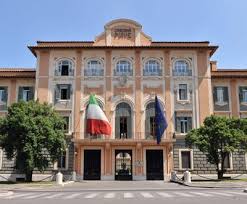 The Guardia di Finanza is an Italian law enforcement agency under the Minister of Economy and Finance authority and it is the oldest military organization of the state.
The Guardia di Finanza is an Italian law enforcement agency under the Minister of Economy and Finance authority and it is the oldest military organization of the state.
In addition to performing judicial police functions and public security such as other police force, the Guardian di Finanza has special powers (and exclusive) tax police functions. The Guardia di Finanza is an armed force part, but it is not logistically part of the Italian Defense Ministery.
To carry out its activities, the Guardia di Finanza makes use of a complex IT infrastructure including sophisticated Hardware and Software systems to achieve its corporate purpose.
The complex interactions between information systems make use of an advanced network infrastructure including optical fiber and radio links which, thanks to their widespread availability allow you to ensure communication between tha various offices and agencies, even when a communication section is out of order.
The Centro Nazionale di Gestione e Supervisione della Guardia di Finanza (CNGS), is the National Centre for Management and Supervision of the Financial Police, based in the General Command, in Rome, has the difficult task to check that all of the network infrastructure running perfectly in order to ensure that IT services such as e-mail, web portals or the message exchange systems with peripheral commands running perfectly and do not cause disruptions.
At the heart of this infrastructures there are the network devices connected both by optical fiber and radio link.

Before adopting the Sentinet3 monitoring system, the difficult task of CNGS
was supported by the national offices' representatives that whenever occurs an
infrastructure failure, they promptly warned the head office to enable troubleshooting functions. In that situation the infrastructure control was supported by the local offices which they had to alert of the necessary CNGS.
Today this task is ensured by Sentinet3 that checks over 300 devices and 3000 network services every minute.
To ensure real time monitoring of the entire infrastructure, both active and passive controls have been implemented.
In the first case it is directly the central device that monitors the infrastructure devices at regular intervals to ensure constant updating of their condition. This activity might present a few minutes mismatches, in fact, if a device is monitored every three minutes and have a fault, this will be known only to the next control. To overcome this problem, the controls have been implemented where Sentinet3 remains passively monitoring and if a device have a fault, is it to warn of their status change. A meticulous balance between these two types of monitoring allows the CNGS to have a timely supervision of this whole complex IT infrastructure.
This activity is also supported by the multilevel map display including both the elements working on fiber optics and the radio link backbone. This abundance of technologies (radio link and fiber optics) ensures a constant network connection to remote locations even when one of that is out of order. Thanks to maps, you can take a look at the associated links and transmission technology.
The Sentinet3 adoption now allows the IT infrastructure managers to constantly monitor the devices' state
and realize a malfunction before the IT service users notice it, with a surprising improvement of troubleshooting time. When any malfunction occurs, the referents are informed promptly thanks to the alerting system that notifies by Email and SMS and runs the infrastructure troubleshooting procedures in real time.
Per garantire un monitoraggio real time dell’intera infrastruttura sono stati implementati sia controlli attivi che passivi.
Nel primo caso è direttamente l’apparato centrale che monitorizza i dispositivi infrastrutturali ad intervalli regolari a garantire il costante aggiornamento dei loro stati. Quest’attività però potrebbe presentare disallineamenti di qualche minuto, infatti, se un dispositivo è monitorato ogni tre minuti e subisce un fault, questo sarà rilevato solo al controllo successivo. Per ovviare a questo problema sono stati implementati controlli dove Sentinet3 rimane passivamente in ascolto e qualora un device subisce un fault è lui stesso ad avvisare del proprio cambiamento di stato. Un oculato bilanciamento di queste due tipologie di monitoraggio permette al CNGS una puntuale supervisione di tutta questa complessa infrastruttura IT.
Questa attività viene supportata anche dalla visualizzazione di mappe multilivello contenti sia gli elementi che lavorano su fibra ottica che le backbone in ponte radio . Questa ridondanza di tecnologie (ponte radio e fibra ottica) garantisce alle sedi periferiche una costante connessione alla rete anche quando una delle due non è funzionante. Grazie alle mappe è possibile avere un colpo d’occhio sui link di collegamento e sulla tecnologia trasmissiva ad essi associata.
L'adozione di Sentinet3 permette ora ai responsabili dell'infrastruttura IT di monitorare costantemente lo stato degli apparati e accorgersi dei malfunzionamenti prima che gli utilizzatori dei servizi IT se ne accorgano, con conseguente visibile miglioramento dei tempi di risoluzione dei problemi. A ogni malfunzionamento i referenti sono informati prontamente grazie al sistema di alerting che avvisa su canale ridondato tramite Email e SMS e attiva le procedure di troubleshooting dell'infrastruttura in real time.





